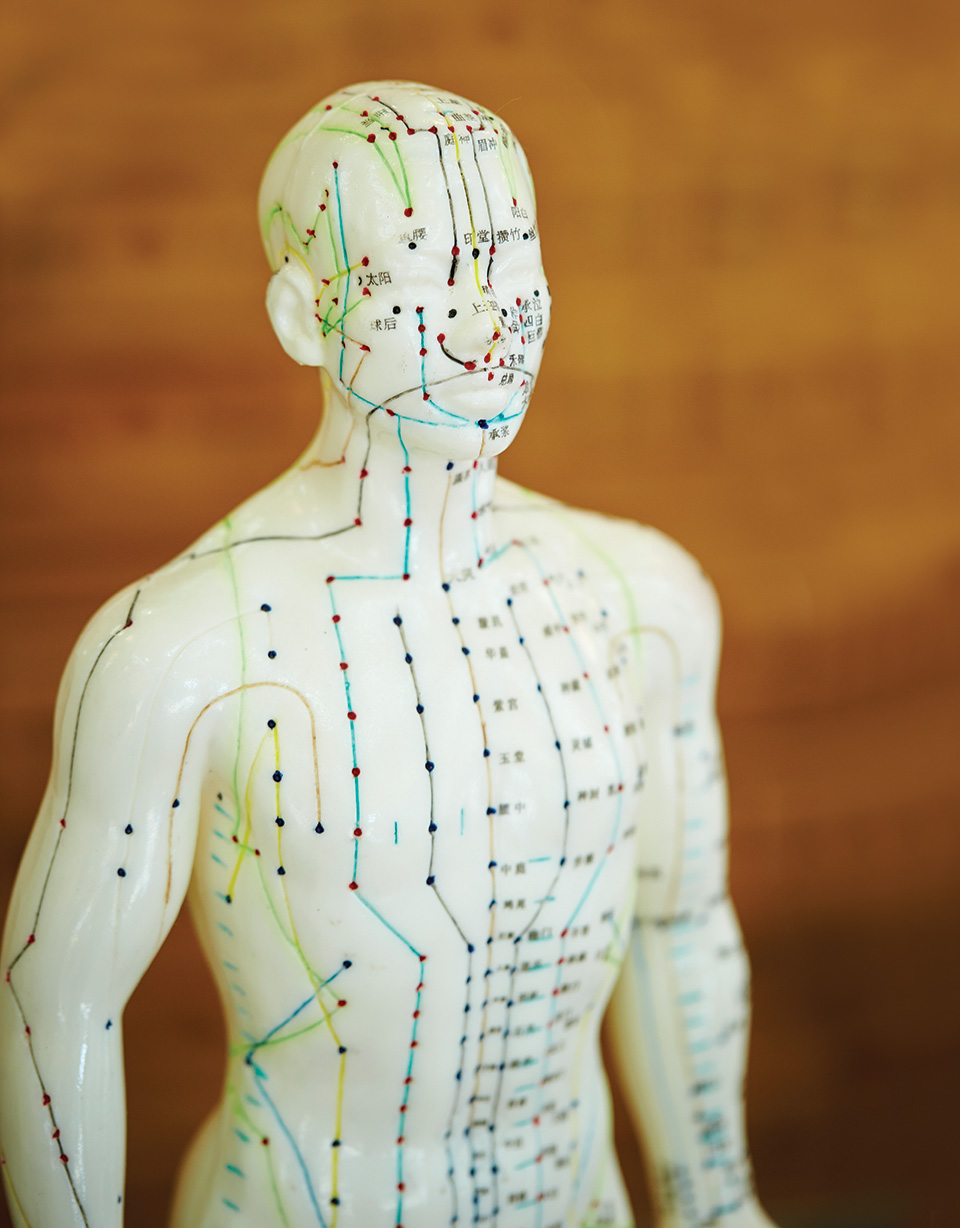Dry Needling vs. Acupuncture

The technique of dry needling (DN) dates back to the 1940s but has only gained mainstream acceptance in the physiotherapy and pain medicine world in the last couple of decades. DN is the use of sterile, single-use filiform needles (acupuncture needles) to treat soft tissue injuries and other pain conditions. In its purest form, dry needling is used to reverse myofascial trigger points (TrPs), which are believed to be major players in persistent pain cycles. TrPs are tiny, persistent contractions within muscle fibers (knots or ropey bands). They generate pain, are hyper-irritable and hypersensitive, and usually make the entire muscle feel both tight and weak.
Following specific precautions and protocols, the needle is inserted directly into the area containing the TrP and is manipulated in search of a localized twitch of the muscle. It is believed that the twitch is due to the needle stimulus setting off an involuntary spinal reflex that results in a contraction of the muscle. Twitches are correlated with pain reduction and muscle relaxation, which is usually more profound the more twitches elicited.
Similarities to Acupuncture?
When I propose DN to my patients I’m almost always asked how it differs from acupuncture. My explanation goes something like this: Acupuncture needles in DN were introduced in the late 1970s. Prior to that, “dry” hypodermic needles were often found to be just as effective as injections of anesthetics (“wet” needles) when inserted into tender points, taut bands of muscle fibers, or TrPs. Later studies showed that acupuncture needles were just as effective and tolerated better (for obvious reasons). They have been used by dry needlers ever since.
Acupuncturists practicing Traditional Chinese Medicine (TCM) indeed often use needles to treat musculoskeletal pain, sometimes using similar manipulation of the needle as dry needlers. Interestingly, many common TrPs overlap larger sensory nerves and acupuncture points. Because of these similarities some acupuncturists claim that DN is simply a subcategory of a more myofascial minded form of acupuncture.
Keep reading for more information on Dry Needling and Acupuncture!

The Needling Effect
The moment a needle is inserted into the skin a physiological, neurological, and immunological cascade occurs and is the same whether a physical therapist, chiropractor, or MD is performing dry needling or if an acupuncturist is practicing TCM with much broader goals than treating just musculoskeletal problems. Granted, this would be a western medicine, or biomedical, way of thinking. There are many different techniques used in both needling and acupuncture with many different intended results.
A needle inserted into tissue induces microtrauma and thus, an immediate inflammatory response. This includes, but is not limited to, an increase in blood flow through vasodilation (bringing oxygen and other nutrients) and the production of immune cells that act as healing agents by way of their inflammation-controlling and tissue-healing capacities. I explain to my patients that the soft tissue injury they’ve had didn’t heal correctly, so needling gives the body another opportunity to “get it right.”
There is also a pain modulating effect in which stimulation from the needle sets off a series of events in the nervous system. Research has shown that needle insertion turns on some of our natural pain-blocking and pain-relieving systems. The mechanisms for this are too numerous and lengthy to be explained in this article.
The Big Differences
The general theory, rationale, and mindset around the use of needles in dry needling is quite different compared to that in TCM. Dry needlers look at the needle as a tool specifically to treat myofascial issues. There is never mention of placement of needles along meridians or in a manner that will affect chi as in acupuncture. Our assessment focuses on dysfunction of the musculoskeletal and nervous systems rather than “syndrome differentiation,” which is an acupuncturist’s inspection of multiple bodily systems in order to form a treatment plan and, ultimately, a decision on where to place needles. We dry needlers are
singularly focused on regional healing and reduction of pain and movement dysfunction. Acupuncture is much more global in its intentions and, in fact, aims to affect every major system of the human body.
DN is one of many tools I have in my physical therapy toolbox. I don’t use DN on all of my patients, nor do a handful of them even want needles stuck in them. But if I do needle my patient they will never receive it without also receiving other modalities (such as soft tissue mobilization and exercise prescription) as well as a lot of explanation about their condition and what needs to be done to remedy it. Point being, DN should be viewed as just one of many options in neuro-orthopedic therapy and it is likely to be less effective when not combined with other treatment modalities.






